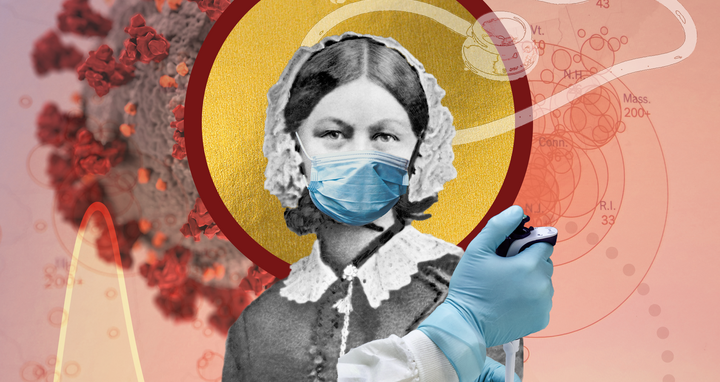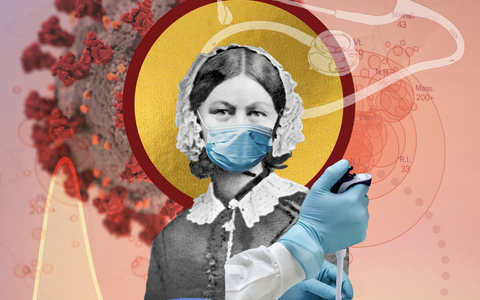Art by women in science
According to UNESCO, women scientists only account for a mere 30 percent of researchers worldwide. “In many areas, gender equality is still a work in progress – one that the COVID-19 pandemic has hindered and hampered”, says UNESCO Director-General Audrey Azoulay. By organizing the exhibition “Creative Resilience” UNESCO shines a light on 54 women scientists across the globe.
Their artwork is inspired by women’s experiences during the pandemic. Female neuroscientists, doctors, nurses and medical students used their artistic talents and combined them with their expertise in the fields of science, health, science communication and technology to provide a testimony of the impact of the COVID-19 pandemic on society. Some artists transformed scientific tools into art pieces or used painting, photography, sculpture, crocheting or film to bring their creativity to expression.
Nightingale was an iconic heroine
She used visualization techniques to explain epidemiological data to people in the British government – similar to how many scientists provided information to politicians and the general public during the pandemic.
One of the featured scientists is Dr. Eleonora Adami, who submitted a digital collage. The molecular biologist works as a postdoc at the Max Delbrück Center of Molecular Medicine in the Helmholtz Association (MDC). She specializes in the single-cell sequencing of human heart cells in the lab of Professor Norbert Hübner.
Adami is exhibiting a portrait of Florence Nightingale (1820–1910) that she arranged in front of a graphical representation of a coronavirus. According to Adami, this surreal reinterpretation of the pandemic pays tribute to all women in science and healthcare. Nightingale laid the foundation for professional nursing and was a pioneer in information design. “That is why she is an icon in the medical world,” Adami says. “She used visualization techniques to explain epidemiological data to people in the British government – similar to how many scientists provided information to politicians and the general public during the pandemic.” Nightingale also understood that clear communication is critical when it comes to putting effective measures into action, Adami adds.
Pandemic Surrealism, 2020, collage, portrays a surreal re-imagination of the pandemic by positioning an aura of the coronavirus behind Florence Nightingale (1820-1910).
The artworks presented in the catalogue were selected from over 200 candidates. They are currently on view to the general public in a virtual walkthrough and a physical exhibition from October 28 to December 1 at UNESCO Headquarters in Paris.
Further information
Exhibition catalogue (Adami’s artwork can be found on p. 127)
- Max Delbrück Center for Molecular Medicine in the Helmholtz Association (MDC)
-
The Max Delbrück Center for Molecular Medicine in the Helmholtz Association (MDC) is one of the world’s leading biomedical research institutions. Max Delbrück, a Berlin native, was a Nobel laureate and one of the founders of molecular biology. At the MDC’s locations in Berlin-Buch and Mitte, researchers from some 60 countries analyze the human system – investigating the biological foundations of life from its most elementary building blocks to systems-wide mechanisms. By understanding what regulates or disrupts the dynamic equilibrium in a cell, an organ, or the entire body, we can prevent diseases, diagnose them earlier, and stop their progression with tailored therapies. Patients should benefit as soon as possible from basic research discoveries. The MDC therefore supports spin-off creation and participates in collaborative networks. It works in close partnership with Charité – Universitätsmedizin Berlin in the jointly run Experimental and Clinical Research Center (ECRC), the Berlin Institute of Health (BIH) at Charité, and the German Center for Cardiovascular Research (DZHK). Founded in 1992, the MDC today employs 1,600 people and is funded 90 percent by the German federal government and 10 percent by the State of Berlin.






